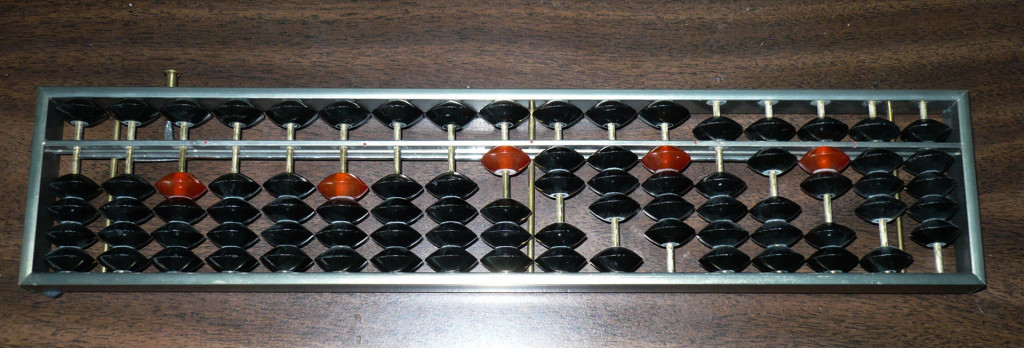‘Faulty abacus? DVA and the cost of commemoration’, Honest History, 30 November 2017
The Department of Veterans’ Affairs, working through the French government tourist bureau, Atout, recently squired a couple of Australian-based journalists around the battlefields of the Western Front (Update 25 October: ‘Monash busted’). We can expect more of this to occur as the centenary of the end of World War I approaches. DVA and Fairfax are feeding contributed content to regional newspapers although, to this point, that material has been balanced rather than jingoistic.
Along the way, there has been some ‘spin’ from DVA on the costs of commemoration. For example, General Dave Chalmers, head of DVA’s commemoration team, told the Australian Financial Review in September that ‘the amount spent on commemorations represented only a tiny portion of the Department of Veteran Affairs’ annual expenditure of $12 billion, of which mostly [sic] goes to veteran pensions’. Then, Ken Corke, who reports to General Chalmers, told Fairfax’s Mark Dapin that ‘less than 1 per cent of the Department of Veterans’ Affairs huge $11.7 billion budget goes towards commemoration’.
We at Honest History are intimately acquainted with this calculation. Indeed, we had to help DVA to get it right. In 2015, then Minister Ronaldson was so eager to defuse the issue of commemoration spending that he told the Senate that this spending represented less than 0.1 per cent of DVA’s total budget. After considerable effort, Honest History was able to convince the Minister’s portfolio that the correct proportion was less than 1.0 per cent. (Minister Ronaldson or his speechwriter must have been away on the day their primary school explained decimal points.) The story is told here, here, here (Update 9 June), and here. The correct figure in 2015 seemed to be around 0.73 per cent, not 0.1 per cent.
The point is that, even when correct, the calculation – DVA commemoration spend as a proportion of total DVA spend – is spurious. While it might help DVA beat off critics of commemorative largesse, it is quite misleading – and DVA knows it (or at least its Secretary knew it in 2015).
 Positional decimal system on Chinese abacus (Wikimedia Commons)
Positional decimal system on Chinese abacus (Wikimedia Commons)
At the time, 2015, we found and reprinted a relevant discussion in the Senate Estimates Committee (p. 147) and we repeat it here with our commentary. The real issue is how much of the portfolio’s discretionary expenditure – the amount which is not locked in as pensions and other payments – goes to commemorative projects.
Senator GALLACHER [ALP, SA]: Just to clarify that: if $12 billion is being spent, how much of that is discretionary spending and how much is spent on pensions and program payments?
Mr Lewis [Secretary, DVA]: Roughly speaking there is $6.5 [billion] on income support and compensation and $5.5 billion on health services.
Senator GALLACHER: What does that leave out of the $12 billion?
Mr Lewis: I am probably slightly out but our departmental budget this year is a fraction under $300 million – departmental resources.
Senator GALLACHER: So we are spending $88 million out of the $300 million on commemoration?
Mr Lewis: No. The $88 million would be a combination of departmental resourcing and administered resourcing.
The technical terms ‘departmental resourcing’ and ‘administered resourcing’ are explained here. ‘Where an agency has substantial control, the related appropriation and expenditure is classified as departmental and where an agency does not have control, expenditure is classified as administered.‘
The key point, however, is finding the appropriate figure for overall discretionary expenditure to compare with the $88 million (some departmental, some administered), the amount the government had chosen to spend in that year on commemorative projects. The Secretary did not offer such a figure but the appropriate figure certainly is not $12 billion and is way, way less than that, perhaps somewhere around $300 million, since that was the figure the Secretary came up with in answer to Senator Gallacher’s question.
If the 2015 figure did happen to be $300 million then $88 million would be 29 per cent of it. That’s rather different from ‘less than 1 per cent’ and it isn’t ‘a tiny portion’. It would be interesting to have DVA confirm, clarify and update for the current year Mr Lewis’s Estimates Committee stab at this crucial calculation.


Leave a Reply
You must be logged in to post a comment.